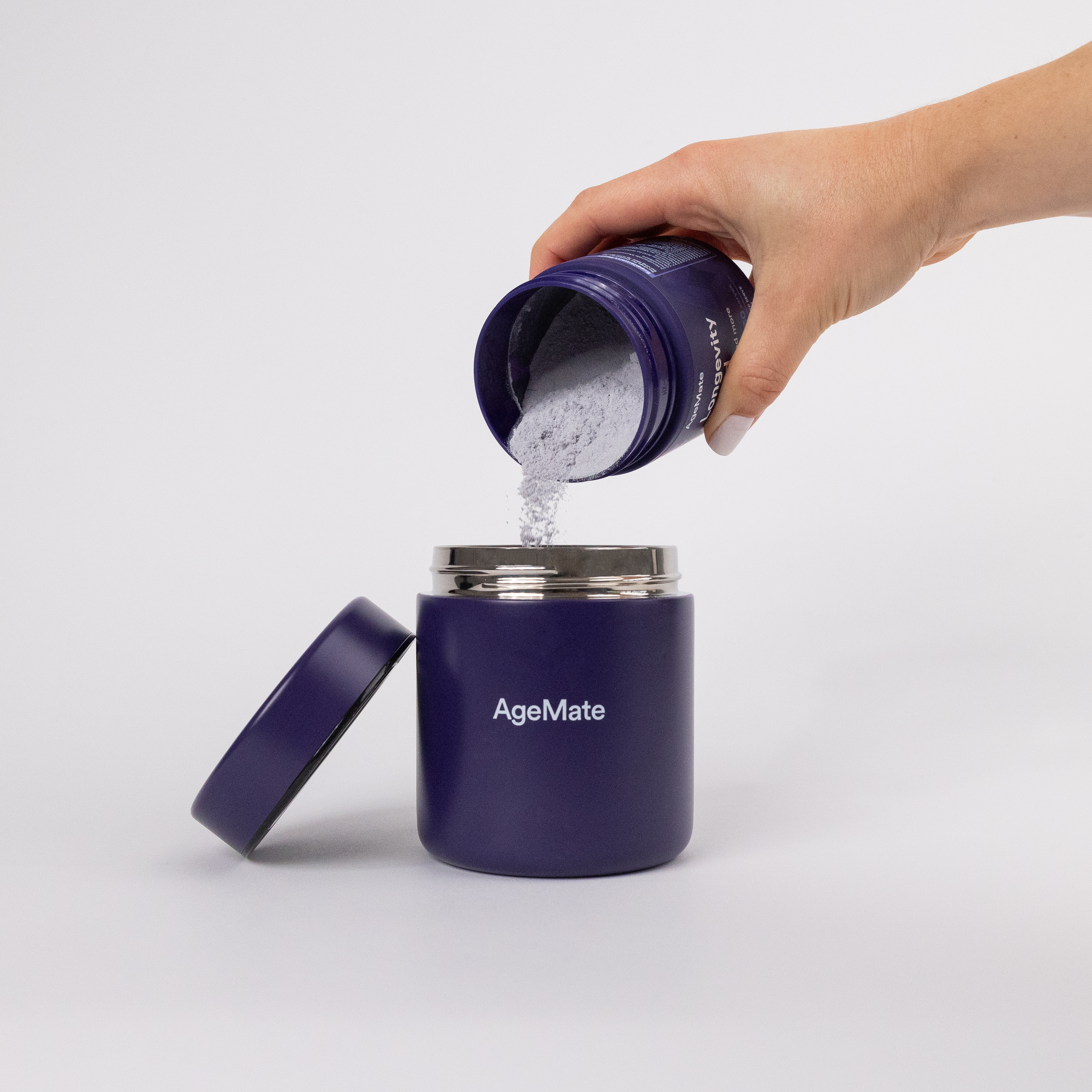Key Takeaways
-
Your 3pm slump is a natural dip in your circadian rhythm — not just about lunch
-
Blood sugar balance, hydration, and light exposure play a big role in your afternoon energy.
-
Small lifestyle tweaks like natural light, magnesium-rich snacks, and strategic naps can help you sail through your day.
Did you know your body expects to feel sleepy around 3pm? This isn’t a sign of poor motivation or “getting old” — it’s actually your circadian rhythm doing its job. In fact, researchers have found a biphasic dip in alertness across all age groups, with a clear low point occurring between 1:30pm and 3:30pm (R). That explains why many Mediterranean cultures embraced siestas — they were onto something!
What Causes That Afternoon Energy Dip?
You’re not imagining it — there’s real science behind why energy dips in the mid-afternoon. Your body runs on a 24-hour internal clock, known as the circadian rhythm. This master regulator doesn’t just affect your sleep; it also impacts your alertness, hormone release, digestion, and even body temperature.
Between 1pm and 3pm, your body naturally produces less cortisol, the hormone that keeps you alert, while melatonin (the sleep hormone) begins to rise ever so slightly — even in daylight (R). This shift can feel like a wave of drowsiness, especially if you’ve been sedentary or haven’t had much daylight exposure.
Interestingly, studies show that older adults may experience a phase advance in circadian timing — meaning your internal clock is a little earlier, making that afternoon dip hit harder and sooner than it would for younger people (R).
The Role of Blood Sugar, Meals, and Mornings
A few key lifestyle choices in the morning can set the stage for that sleepy 3pm wall
That sandwich at lunch might not be helping. When you eat a meal rich in carbohydrates — particularly simple ones like white bread or sugary snacks — your blood sugar spikes and then dips, triggering fatigue. This “postprandial dip” in blood glucose is one of the biggest drivers of the 3pm crash (R).

Even breakfast plays a role. A high-sugar or low-protein breakfast can cause a rollercoaster of energy fluctuations. On the other hand, protein- and fibre-rich breakfasts (like Greek yoghurt with nuts or eggs and spinach) provide steadier blood sugar throughout the day.
Skipping meals or not drinking enough water in the morning also adds fuel to the fatigue fire. Mild dehydration — just 1–2% loss in body water — has been shown to reduce alertness and cognitive performance (R).
How Natural Light and Movement Reset Your Clock
It’s not just about sleep — your exposure to light and motion matters more than you think
Sunlight is your body’s most powerful cue to stay awake and alert. Without enough natural light in the first half of your day, your brain doesn’t get the signal to dial down melatonin, leaving you feeling foggy well into the afternoon (R).
Make it a habit to step outside in the morning or after lunch, even for 10–15 minutes. The sun (with some protection, of course) offers not just vitamin D, but also powerful circadian stimulation. If you’re inside all day, consider a 10,000-lux light therapy box to mimic daylight and regulate your rhythms.
Movement also matters. Gentle exercise such as a post-lunch walk or light stretching boosts circulation and endorphins, both of which lift your energy naturally. One study showed that even brief physical activity breaks significantly improved attention and reduced feelings of fatigue in older adults (R).

Smart Nutrition to Boost Afternoon Energy Naturally
To keep energy steady, look for snacks rich in magnesium, protein, and complex carbohydrates. Magnesium helps regulate glucose and energy production, and it’s found in almonds, pumpkin seeds, and dark leafy greens.
Avoid the temptation of sugary “pick-me-ups” — they’ll only set you up for another crash. Instead, try these natural afternoon energisers:
- A small handful of walnuts and blueberries
- A boiled egg and wholegrain crackers
- Greek yoghurt with chia seeds and cinnamon
If you’re a tea drinker, green tea contains both caffeine and L-theanine — a compound that promotes calm alertness without the jitters or crash associated with coffee (R).
Can a Nap Help? Only If Done Right
There’s nothing indulgent about a nap. In fact, NASA found that a 26-minute nap improved alertness by 54% in pilots (R). However, the key is to keep naps short — ideally under 30 minutes — to avoid entering deep sleep, which can leave you groggier than before.

The optimal window for a nap? Between 1:30pm and 3pm, aligning perfectly with your natural circadian dip. If you wake up earlier in the morning, this window may start even sooner.
Even just lying down with your eyes closed and focusing on your breath can reduce the mental fatigue that builds up by mid-afternoon.
The Power of Routine, Sleep, and Evening Wind-Downs
Your body loves rhythm, and that includes sleep-wake timing. Older adults often experience changes in sleep architecture, including lighter sleep and earlier wake times. But improving your sleep hygiene can still enhance your next-day energy.
Stick to a consistent wake-up and bedtime, even on weekends. Limit screens before bed and avoid heavy meals late in the evening. Consider calming evening rituals like stretching, reading, or herbal tea (chamomile or lemon balm are gentle favourites).
And yes, your 3pm self is shaped by your 10pm habits. Getting enough quality sleep helps reduce the depth and length of your afternoon slump.
Small Changes, Big Energy Wins
The 3pm slump doesn’t mean you’re doing something wrong — it’s simply biology. But now that you know what’s behind it, you can tweak your routine to support more energy, focus and vitality.
Want to dive deeper into how sleep affects your health? Check out our blog: How Does Sleep Improve Longevity?





